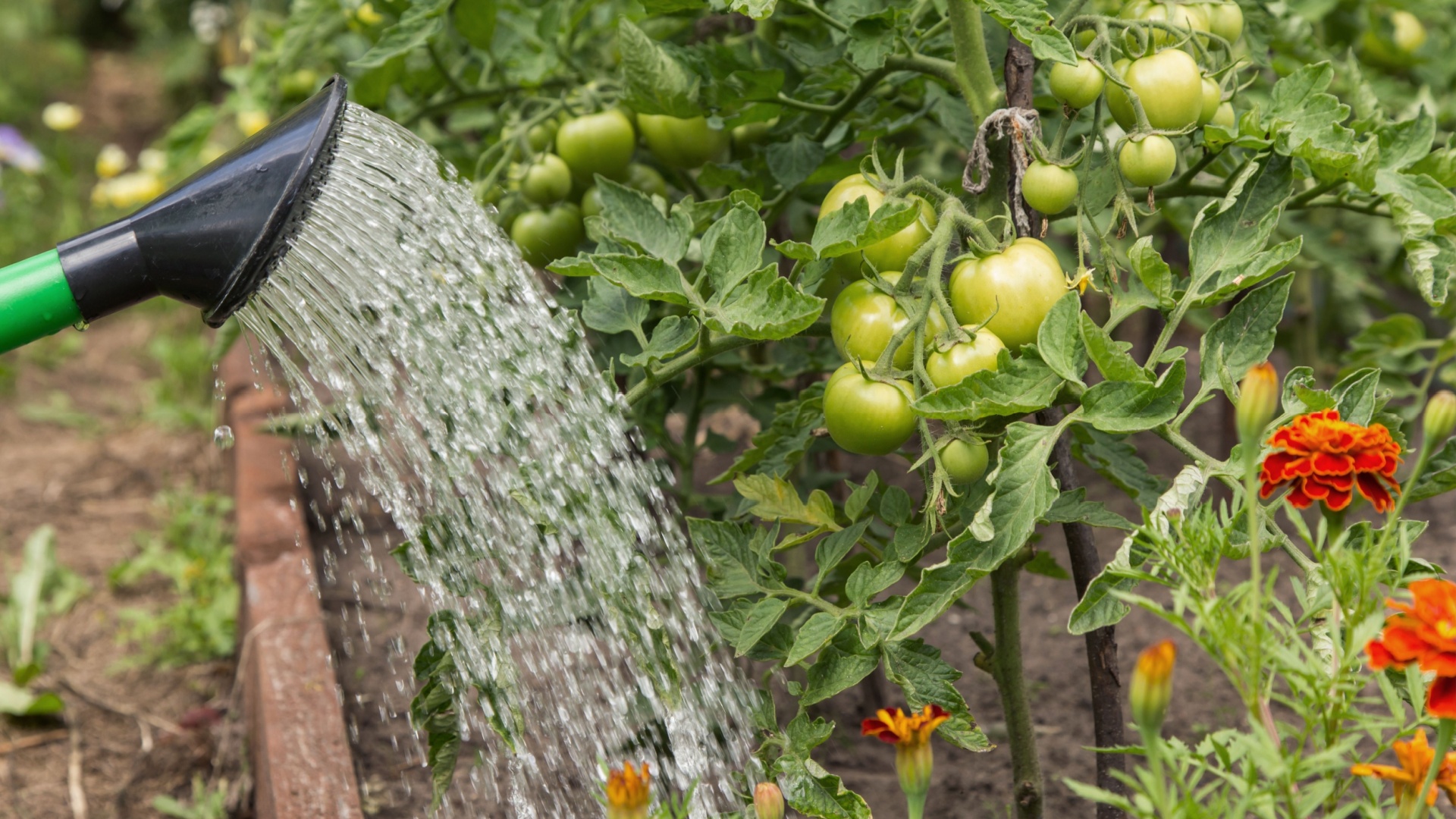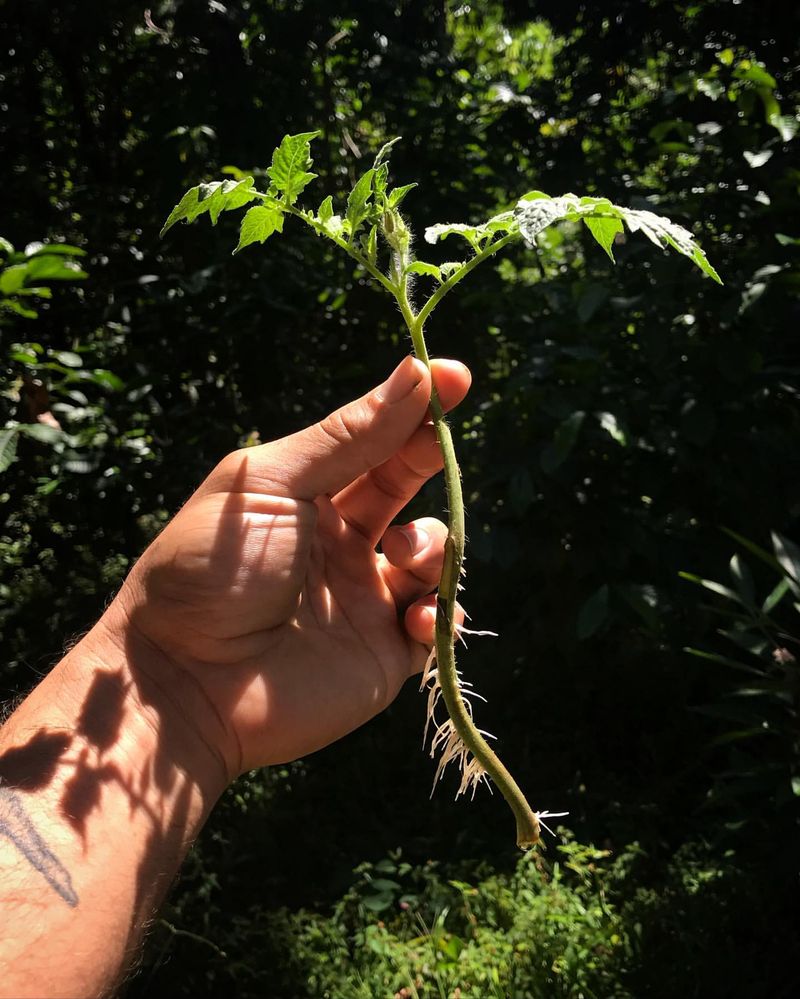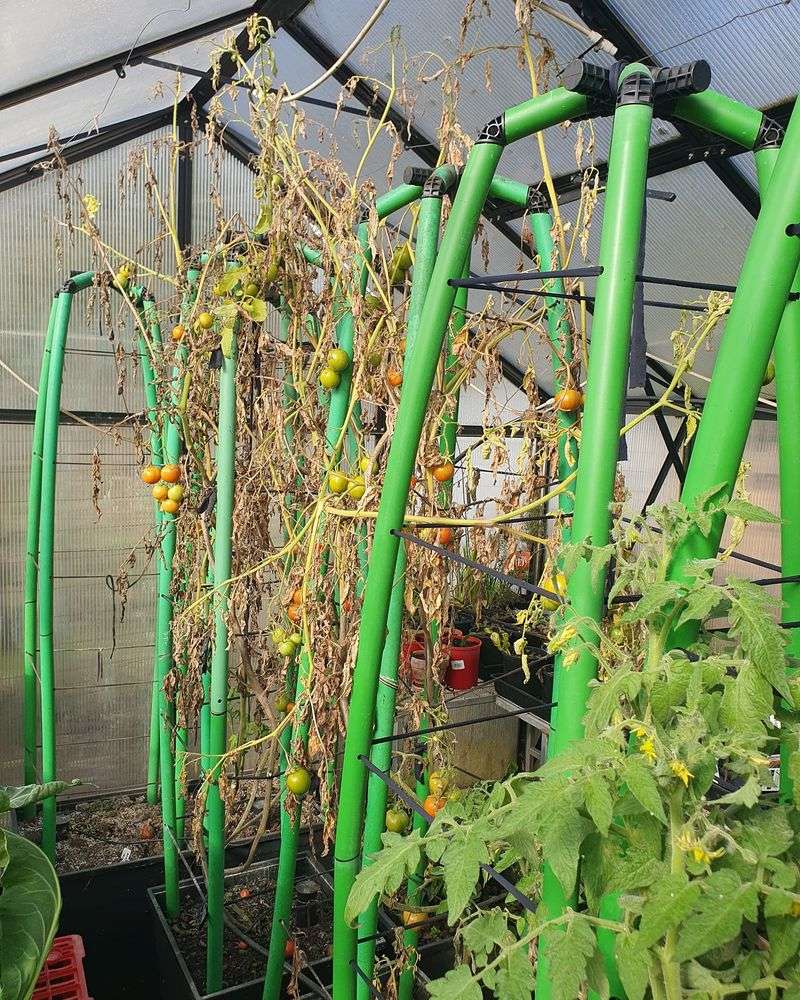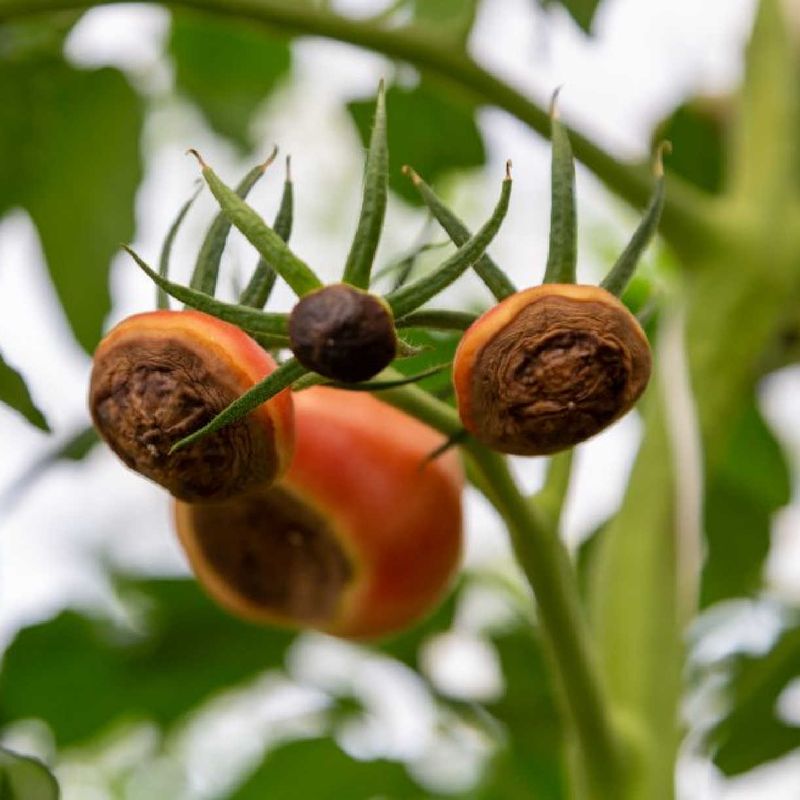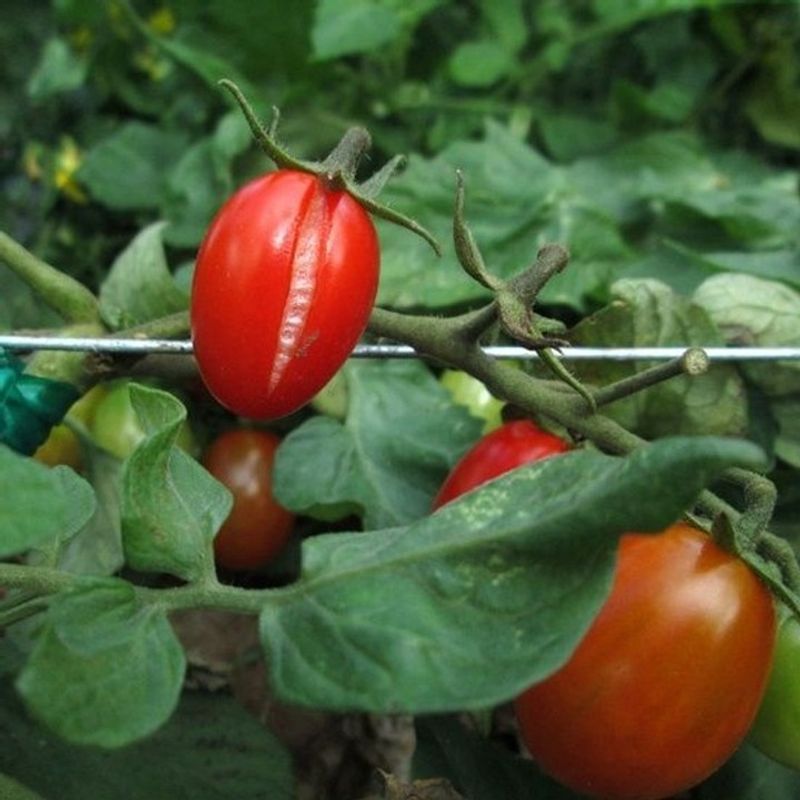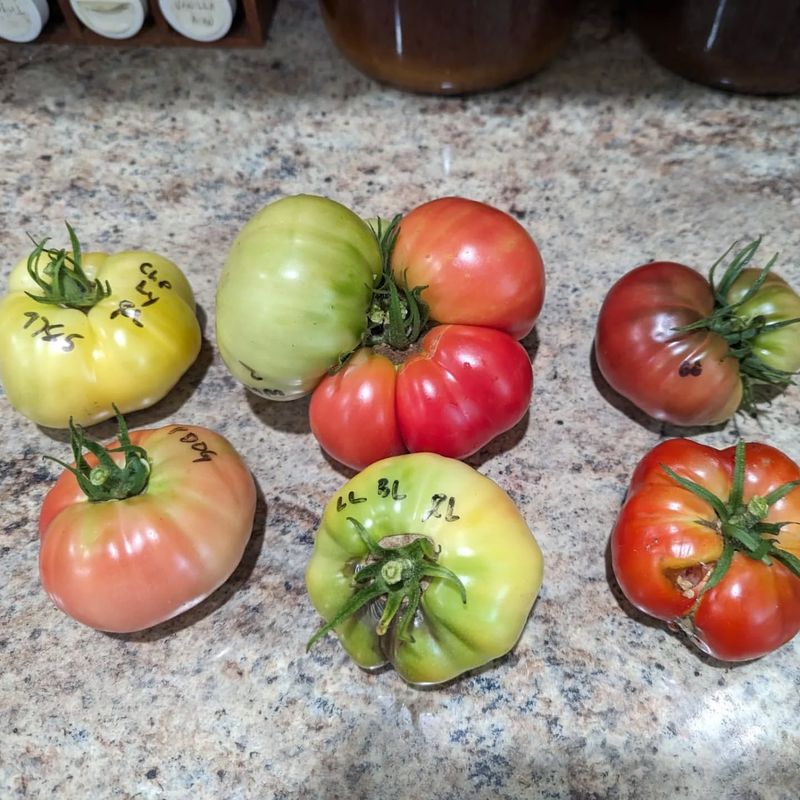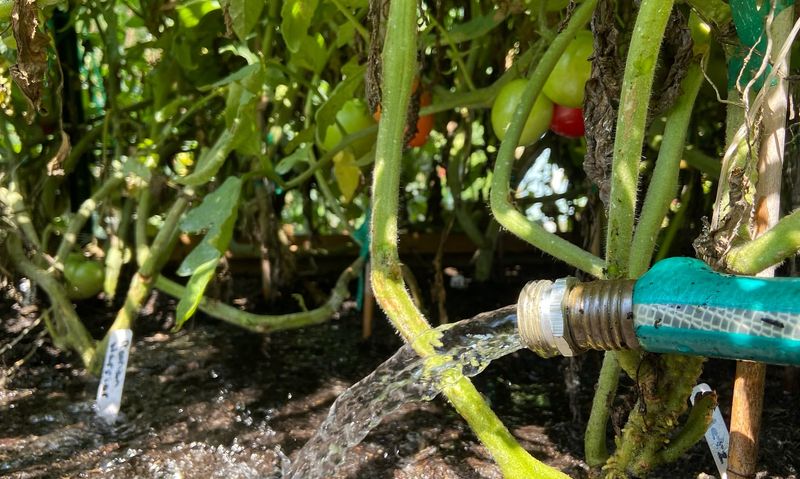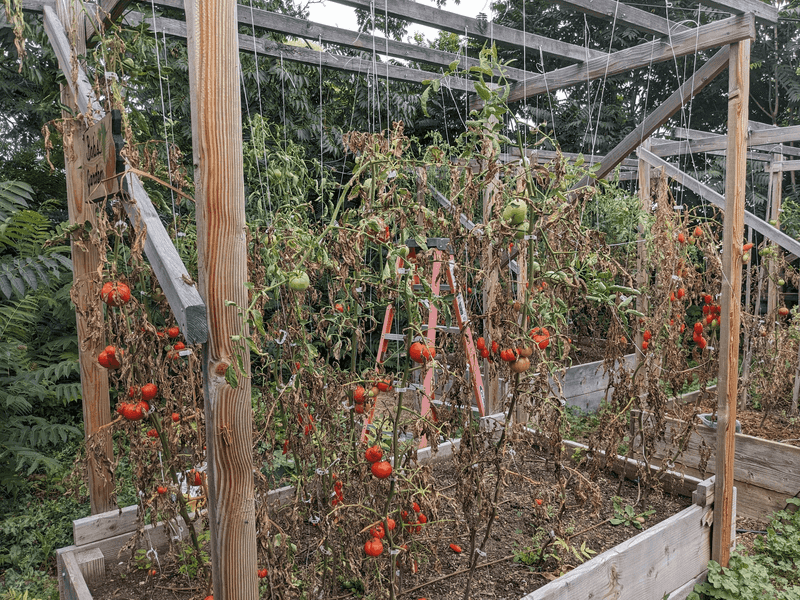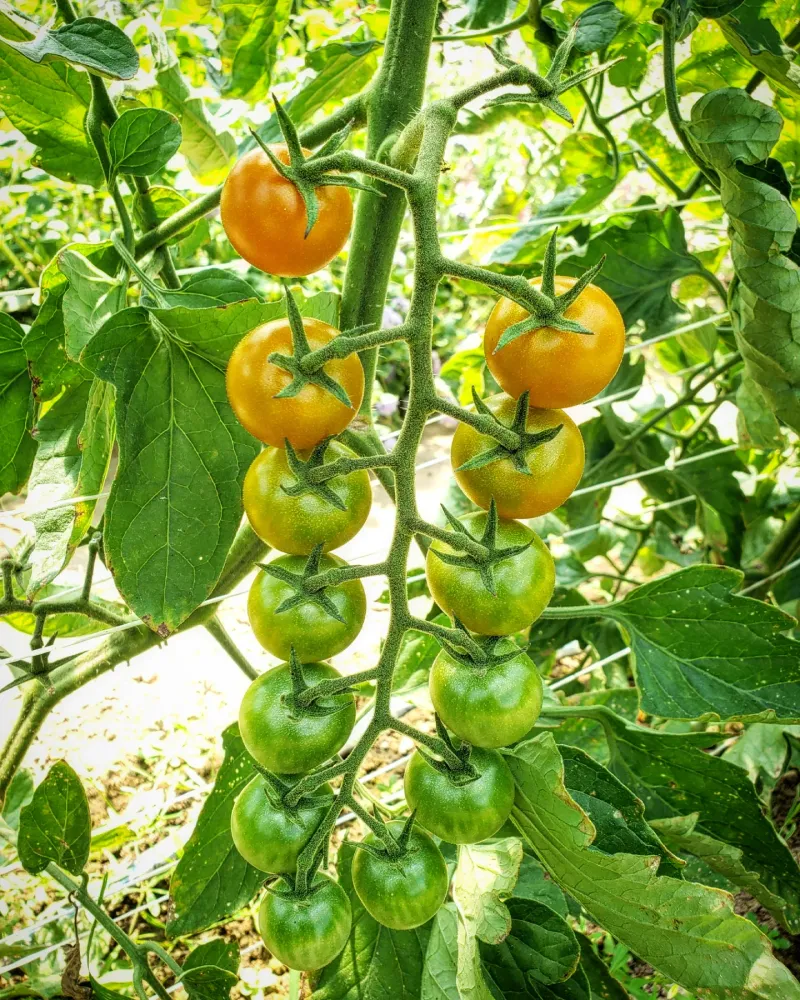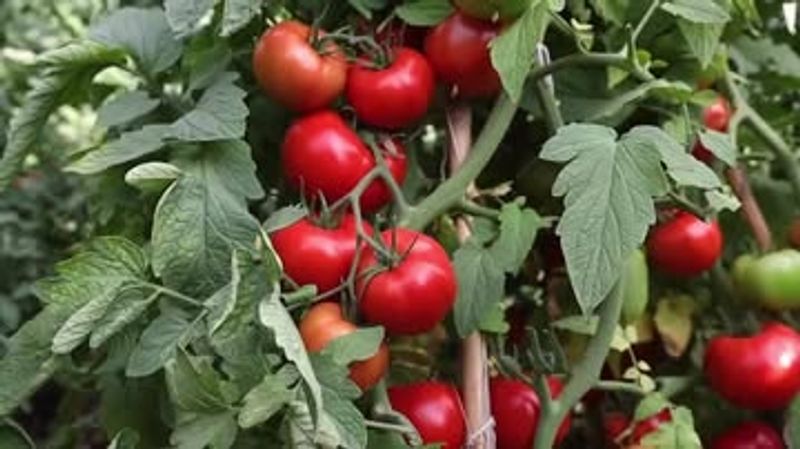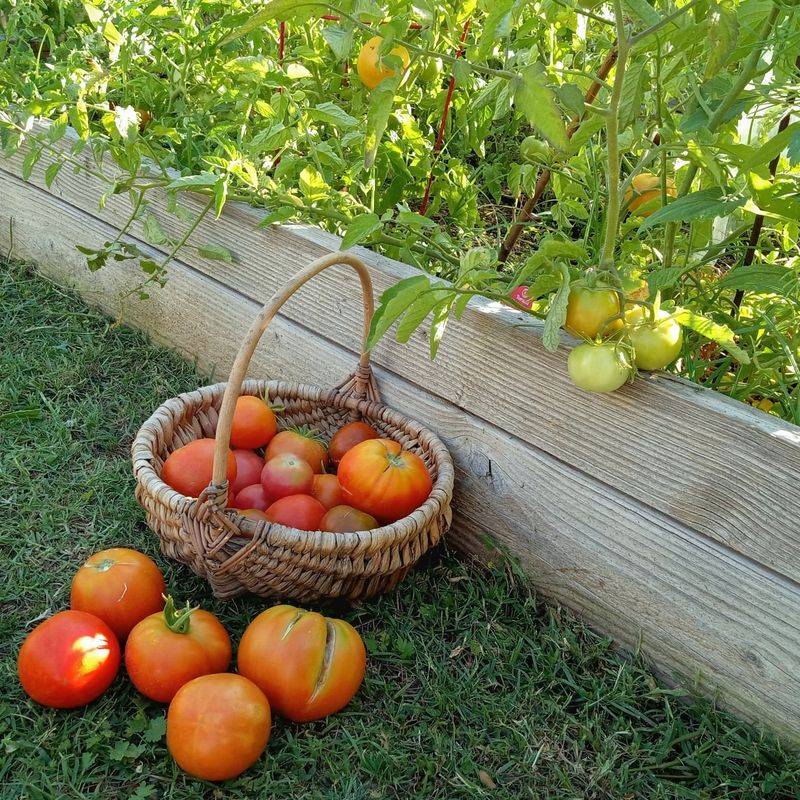Growing tomatoes in Florida’s unique climate presents special challenges for gardeners. Many well-meaning tomato lovers actually damage their plants by watering them every day.
The hot, humid conditions in Florida require specific watering practices that differ from other regions, and making simple adjustments can dramatically improve your harvest.
1. Shallow Root Development
Daily light watering encourages tomato roots to stay near the surface instead of growing deep. When roots remain shallow, plants become less drought-resistant and more vulnerable to Florida’s intense heat waves.
Deep roots access more nutrients and stabilize plants during storms. Water deeply once or twice weekly instead, applying about 1-2 inches each time. This trains roots to grow downward, creating stronger plants that produce more fruit.
2. Fungal Disease Explosion
Wet foliage is a fungal playground in Florida’s humidity. Daily watering, especially overhead sprinklers, keeps leaves constantly damp – perfect conditions for devastating diseases like early blight and septoria leaf spot.
Switch to drip irrigation or soaker hoses that deliver water directly to the soil. Morning watering gives any splashed leaves time to dry before evening, dramatically reducing fungal problems. Your plants will thank you with healthier foliage and more abundant harvests.
3. Nutrient Leaching
Florida’s sandy soil already struggles to hold nutrients. Daily watering accelerates leaching, washing away essential minerals before plants can absorb them. Those pale, yellowing leaves on your tomatoes? That’s likely nutrient deficiency from overwashing.
Fertilize with slow-release options after deep, infrequent waterings. Adding organic matter like compost improves soil structure, helping it retain both water and nutrients between waterings. This balanced approach keeps tomatoes fed without wasteful runoff.
4. Cracking Fruit Syndrome
Those frustrating cracks across your otherwise perfect tomatoes? Blame inconsistent watering patterns. Daily light watering followed by a heavy rain causes fruit to expand too quickly, splitting the skin.
Mulching with straw or pine bark creates a moisture buffer, preventing rapid fluctuations. Pair this with consistent, deep watering on a regular schedule. Your tomatoes will develop more evenly, with fewer cracks and splits, giving you picture-perfect fruit for your summer salads.
5. Blossom End Rot Invitation
That disappointing black bottom on your tomatoes signals calcium deficiency, often triggered by watering habits. Daily shallow watering prevents consistent calcium uptake, especially in Florida’s calcium-challenged soils.
Maintain even soil moisture with scheduled deep waterings. Adding crushed eggshells or calcium supplements to soil helps, but consistent watering makes the calcium actually available to plants. Mulch heavily to maintain moisture levels between waterings for smooth, rot-free bottoms on your tomatoes.
6. Wasted Water Resources
Florida faces increasing water restrictions, making conservation essential. Daily watering wastes precious resources as much of it evaporates in our intense heat before reaching roots. During summer months, up to 50% can be lost to evaporation!
Water deeply at soil level in early morning when temperatures are cooler. Consider installing rain barrels to capture Florida’s abundant rainfall. This sustainable approach conserves water while actually improving plant health through more efficient irrigation practices.
7. Root Drowning Danger
Tomato roots need oxygen, but Florida’s frequent summer downpours combined with daily watering can create waterlogged soil. Oxygen-deprived roots turn brown, rot, and stop functioning – a death sentence for your plants.
Raised beds provide crucial drainage in Florida’s wet seasons. Adding perlite or coarse sand to heavy soils improves aeration. Wait until the top inch of soil feels dry before watering again, giving roots the breathing room they need to thrive in our challenging climate.
8. Flavor Dilution Effect
Ever wondered why homegrown tomatoes sometimes lack that intense flavor? Excessive water dilutes sugar concentration and flavor compounds. Florida’s juiciest, most flavorful tomatoes come from plants that aren’t overwatered.
Gradually reduce watering as fruits mature. Slight water stress during ripening concentrates flavors dramatically. Try the “dry farming” technique in the final weeks before harvest – providing just enough water to keep plants alive but stressed enough to produce sweeter, more complex-tasting tomatoes.
9. Weed Competition Boost
Daily surface watering creates perfect conditions for weeds to thrive alongside your tomatoes. These opportunistic plants often outcompete tomatoes for nutrients and can harbor pests and diseases.
Drip irrigation or soaker hoses deliver water precisely where tomatoes need it without feeding weeds between rows. Combine this with thick mulch to suppress weed germination. Your targeted approach starves unwanted competition while giving tomatoes the moisture they need for maximum production.
10. Heat Stress Vulnerability
Counterintuitively, daily light watering actually makes tomatoes more vulnerable to Florida’s scorching summer heat. Shallow-watered plants develop weaker stems and less foliage, providing inadequate self-shading.
Deep, infrequent watering promotes vigorous growth and natural heat protection. Consider afternoon shade cloth during July and August for extra protection. Selecting heat-tolerant varieties like ‘Solar Fire’ or ‘Florida 91’ paired with proper watering gives you productive plants even during our brutal summer heat waves.

